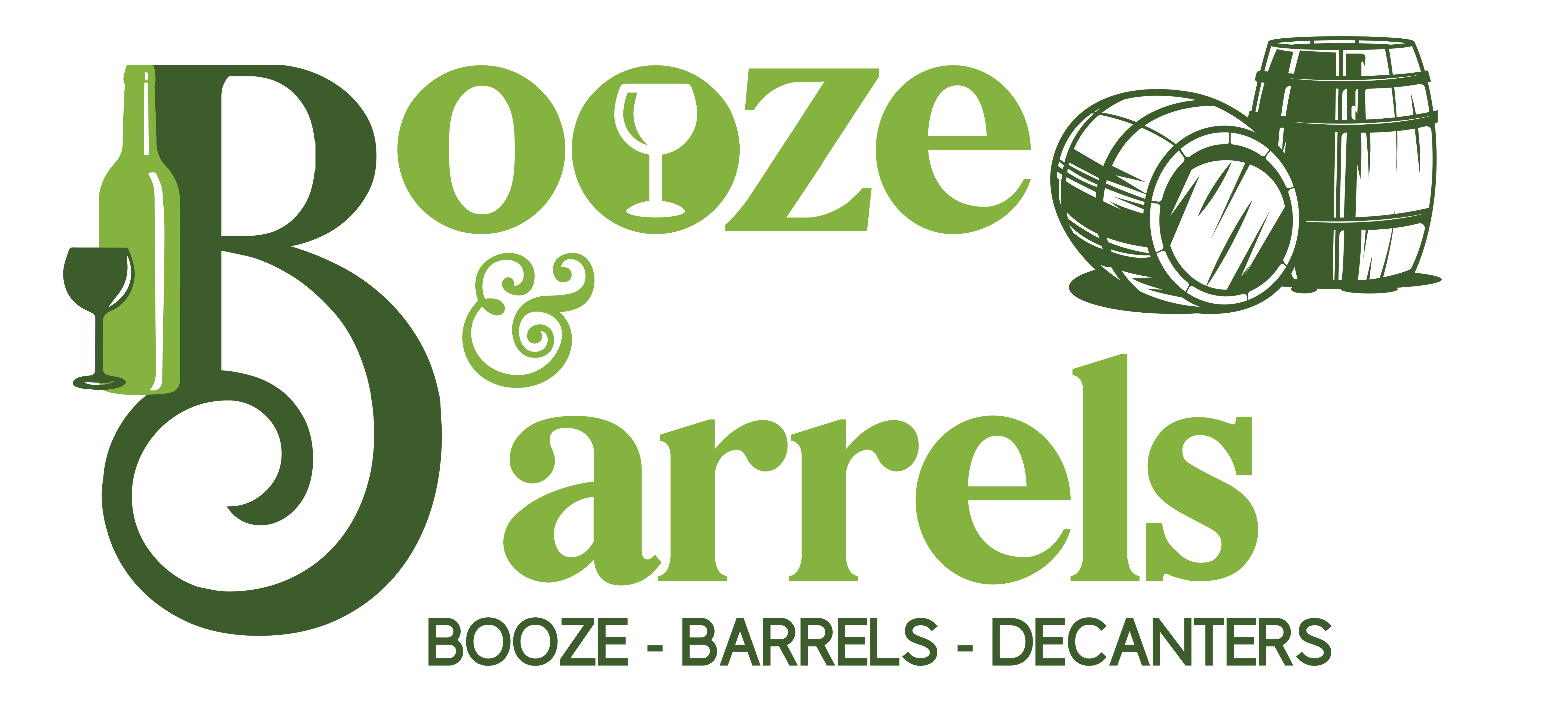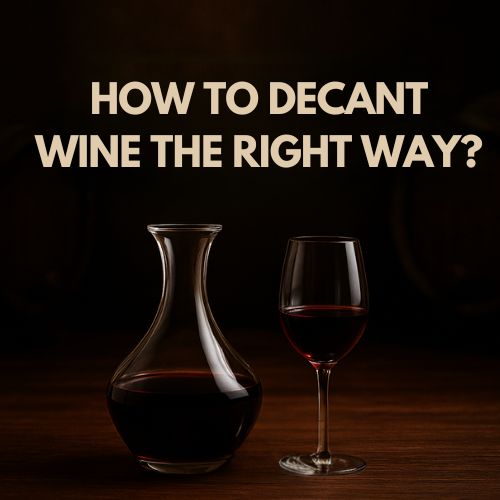
Wine Bottle to Glass: Here’s How Much to Pour Per Bottle
If you open a regular bottle of wine in Australia, which holds 750ml, you’ll usually get about five glasses. That’s because most restaurants and bars serve wine in 150ml pours. This is the usual amount that people drink in one glass when they’re out. But at home or at parties, people often pour more, so you might get fewer glasses from the same bottle.
Many Australians wonder about this when planning a dinner or sharing wine with friends. But here’s the thing: the number of glasses depends on how big each pour is, what type of wine it is, and how strong the wine is.
What Is a Standard Wine Bottle?
All over the world, including Australia. The regular size for a wine bottle is 750ml. This has been the normal size since the 1970s. It helps everyone know how much wine they’re working with when serving with Aesthetics Wine Accessories or planning.
How Big Is a Glass of Wine in Australia?
In most Australian restaurants, a glass of wine is 150ml. This size is used because it’s just enough to enjoy the smell and taste of the wine without having too much at once. But if you’re trying to keep track of how much alcohol you’re drinking, it’s important to know:
A 150ml glass of wine is usually more than one standard drink.
Also, how the wine is served can influence the experience; for instance, some places might pour wine into a decanter before serving. This isn’t just for looks; decanting helps open up the wine’s aroma and flavor, which makes even a small pour feel richer and more satisfying.
Depending on how strong the wine is (its alcohol content), that 150ml pour could be around 1.4 to 1.8 standard drinks. As seen in examples from Liquor & Gaming NSW and the Alcohol and Drug Foundation, that means one bottle could contain 7 to 8 standard drinks, even though it’s just 5 glasses.
Why Does It Change?
The number of glasses in a bottle changes based on a few things:
- Glass size: Big glasses make small pours look tiny, so people pour more.
- Type of wine: Sparkling and dessert wines are often served in smaller amounts.
- Setting: At restaurants, the pour is usually controlled. At home, people often pour more.
Here’s a quick idea of what to expect:
- Sparkling wine is often poured at 120ml.
- Dessert wines might be 60 - 90ml per glass.
- Wine tastings may serve only 30-60ml so you can try many kinds.
So the "5 glasses" idea works best for regular wines in casual or restaurant settings.
What’s a Standard Drink in Australia?
Have you ever seen a glass of wine and wondered, "How much is actually in there?" In Australia, most places like restaurants and bars pour about 150ml of wine into a glass. That’s the usual amount, but it’s not a strict rule. Some places pour a bit more, some a bit less. And at home, people often pour more than that without thinking about it.
What the Rules Say
The government has rules to help people understand how much alcohol they’re drinking. In Australia, one "standard drink" is any drink that has 10 grams of pure alcohol. For wine, that’s about 100ml, less than what’s usually served in restaurants.
So, if you get a 150ml glass of wine:
- If it’s red wine with 13.5% alcohol, that’s about 1.6 standard drinks
- If it’s white wine with 11.5% alcohol, that’s about 1.4 standard drinks
This means one glass could count for more than just one drink. That’s important for adults who are trying to follow health guidelines, like not having more than 10 standard drinks a week or more than 4 in one day.
|
Wine Type |
Serving Size (mL) |
Typical ABV (%) |
Standard Drinks |
|
Red Wine (Standard Serve) |
100 |
13.5% |
1.0 |
|
Red Wine (Average Restaurant Serve) |
150 |
13.5% |
1.6 |
|
Red Wine (Bottle) |
750 |
13.5% |
8.0 |
|
White Wine (Standard Serve) |
100 |
11.5% |
0.9 |
|
White Wine (Average Restaurant Serve) |
150 |
11.5% |
1.4 |
|
White Wine (Bottle) |
750 |
11.5% |
6.8 |
|
Sparkling Wine (Standard Serve) |
100 |
13% |
1.0 |
|
Champagne (Average Restaurant Serve) |
150 |
12% |
1.4 |
|
Champagne (Bottle) |
750 |
12% |
7.1 |
|
Fortified Wine / Port (Standard Serve) |
60 |
17.5% - 20% |
0.9 - 1.0 |
Real-Life Examples
|
Venue |
Wine Type |
Serving Size (ml) |
|
Cookie, Swanston Street, City |
Dragonfly Willow Bridge Shiraz |
190 |
|
Cafe L'incontro, Swanston St |
Lindeman's Shiraz Bin 50 |
150 |
|
Transport, Federation Square |
The Story Tinkers Shiraz |
160 |
|
The Carlton, Bourke Street |
Paringa Shiraz |
160 |
|
The Bridge Hotel, Richmond |
Scotts Shiraz |
150 |
|
Bridie O'Reilly's, South Yarra |
Little Berry Shiraz |
150 |
|
The Railway Hotel, Windsor |
Railway Shiraz |
150 |
|
Patee Thai, Prahran |
McWilliams Shiraz |
145 |
|
Saigon Rose, Chapel Street |
Grant Burge 'The Vigneron' Shiraz |
170 |
|
Spoonbill, at the Olsen Hotel |
2011 Dandelion Lionheart Shiraz |
155 |
A newspaper study found that most restaurants in Australia pour around 150ml of wine, but some places serve as little as 145ml or as much as 190ml. Some even use small lines on the glass, called plimsoll lines, to measure the right amount. But there’s no law that says everyone has to use the same pour size.
What Does That mean for a Whole Bottle?
If a wine bottle holds 750ml and you pour 150ml into each glass, you’ll get about 5 glasses. But let’s look at how many standard drinks that really is:
|
Bottle Size |
Standard Glasses (150ml) |
Standard Drinks (13% Alcohol) |
|
750ml |
5 |
~7.7 |
|
375ml |
2.5 |
~3.8 |
|
1.5L (Magnum) |
10 |
~15.4 |
These numbers change a little depending on how strong the wine is.
Why This Matters?
A lot of people think that one glass means one drink, but that’s not true in Australia. One glass could actually be one and a half or even two standard drinks. That’s why it’s important to understand how much is in a pour, especially for adults who want to make smart choices.
This becomes even more important considering that the hospitality industry in Australia does not have strict regulations on wine serving sizes. Wine Australia’s regulatory activities mainly focus on labeling and export, not on how much wine is served in a glass.
As a result, serving sizes can vary significantly between venues, making it essential for individuals to stay informed and drink responsibly.
What Do You Mean by "a Glass"?
In Australia, this isn’t just about math, it’s about how we enjoy wine. Whether it’s a family dinner, a party, or just winding down after work, knowing the difference between a glass and a standard drink helps you enjoy wine without going overboard.
So yes, you’ll usually get five glasses from a bottle, but how many standard drinks you’re actually having depends on the pour, the type of wine, and how strong it is. Being aware of this makes it easier to stay safe and enjoy your wine responsibly.
Does Glass Size Change the Number of Servings?
Yes, the size of your wine glass can really change how much you drink. In Australia, when you order wine at a restaurant or bar, it usually comes in a 150ml glass. But at home, people often use bigger glasses and pour freely without thinking too much. That means they might pour more than they realize.
Bigger Glass, Bigger Pour
A study from the University of Illinois at Urbana-Champaign, published in the Journal of Consumer Research, found that when you use a bigger or wider glass, you're more likely to pour more wine. This isn’t just an idea, it’s proven by science:
- Adults pour about 19% more into short, wide glasses.
- Teenagers pour around 76% more.
- Even trained bartenders pour 30% more into wide tumblers than tall glasses.
Another study from study from Iowa State and Cornell universities found that people poured more wine when they:
- Used wider glasses
- Held the glass while pouring instead of setting it down
Our brains can be tricked, wide glasses look emptier, so we pour more to "fill" them.
What Does This Mean at Home?
If you’re pouring 200ml or even 250ml into each glass at home, then:
- A 750ml bottle might give you only 3 to 4 glasses instead of 5
- You’re drinking more alcohol with each pour. A 250ml glass at 13% alcohol = about 2.5 standard drinks
In a restaurant, the same glass (150ml) might be just 1.4 to 1.6 standard drinks, depending on the wine.
How Glass Size Matters in Different Places?
The impact of glass size varies by setting. A mega-analysis combining data from eight studies in bars and restaurants, published in PMC, found mixed results.
- Bars: Usually use set serving sizes, so glass size doesn’t matter much.
- Restaurants: Bigger glasses = more pouring. One study found wine sales went up 7.3% when 370ml glasses were used instead of 300ml ones.
- Home: No rules. Most people pour between 180 - 250ml without realizing it.
Standard Drinks and Real Life
In Australia, 1 standard drink = 10 grams of alcohol. But not all glasses are created equal:
- 100ml of 13% wine = 1 standard drink (used in health guidelines)
- 150ml = about 1.5 standard drinks
- 250ml = over 2 standard drinks
Moreover, the BBC News article on wine glass sizes mentions practical reasons for different glass sizes, such as allowing red wine to breathe in larger glasses, but also notes that some glasses can contain up to three units of alcohol, emphasizing the need for awareness.
Does the Type of Wine Matter?
Yes, the kind of wine you drink really does make a difference, especially when it comes to how much alcohol you're having. Not all wine has the same strength, so the amount you drink and how strong it is can change a lot depending on the type.
Why Do Different Wines Have Different Strengths?
In Australia, one standard drink always has 10 grams of alcohol. But not all wines have the same alcohol content. Some are stronger than others, so you can drink less and still get the same amount of alcohol.
Also, how a wine is made can play a role in its strength and flavor. For example, red wines aged in an oak barrel tend to develop richer flavors and may also have slightly higher alcohol levels due to extended fermentation or concentration. That’s why wine type, and even how it’s aged matters when you’re pouring a glass.
Here are some common types:
- Red wine (13.5% alcohol): 150ml = about 1.6 standard drinks
- White wine (11.5%): 150ml = about 1.4 standard drinks
- Sparkling wine (12%): 150ml = about 1.4 standard drinks
- Port or sherry (17.5–20%): 60ml = about 1 standard drink
So even though a glass might look smaller, it can still be just as strong, or even stronger.
Different Wines = Different Pour Sizes
Here’s how much is usually poured depending on the wine type:
|
Wine Type |
Usual Serving Size |
Why Is It That Much? |
|
Red Wine |
150ml |
Lets the wine breathe and taste better |
|
White Wine |
150ml |
Sometimes a bit less to keep it cold |
|
Rosé Wine |
150ml |
Same as red and white |
|
Sparkling Wine |
125ml |
Keeps the bubbles from going flat |
|
Fortified Wine |
60–100ml |
Very strong, so poured in small amounts |
How much wine you get isn’t just about alcohol, it’s also about how the wine is meant to be enjoyed. Sparkling wines like champagne are served in smaller glasses to keep their fizz. Port or sherry is stronger, so you only need a little.
Why Standard Drinks Can Be Tricky?
Two glasses that look the same can have different amounts of alcohol. A 150ml glass of strong red wine has more alcohol than a 150ml glass of lighter white wine.
Here’s what that means:
- Shiraz (14.5%): Stronger - fewer glasses before you reach your limit
- Pinot Grigio (11.5%): Lighter - you can drink more without overdoing it
- Port (20%): Very strong - just 60ml equals one full standard drink
That’s why it’s smart to check the alcohol percentage (ABV) on the bottle label. It shows how strong your wine really is.


